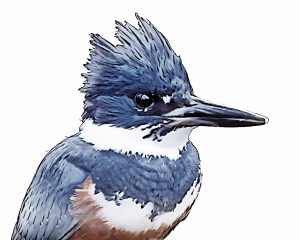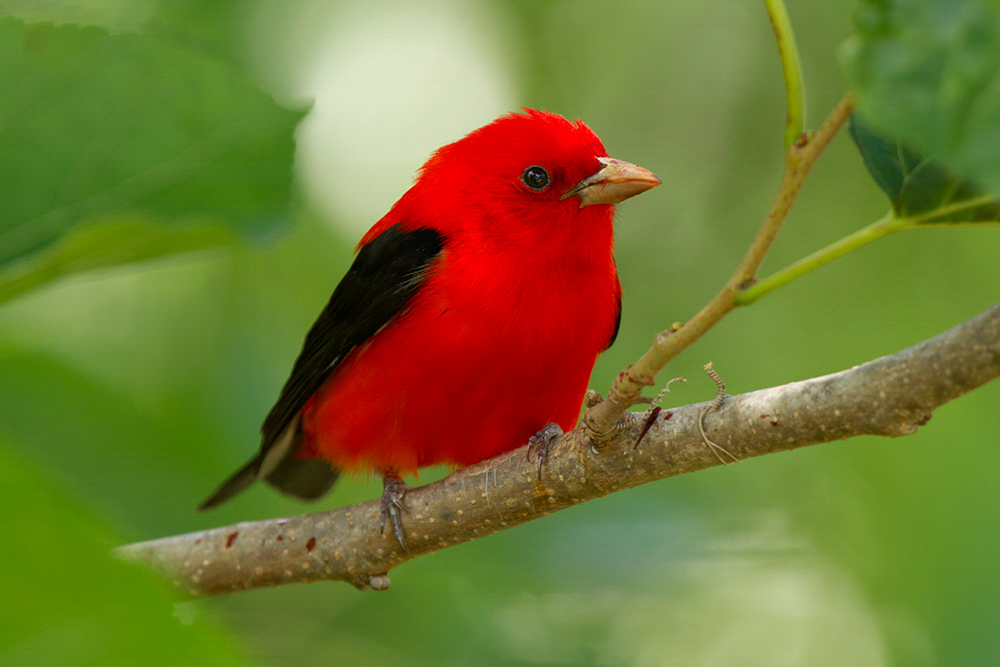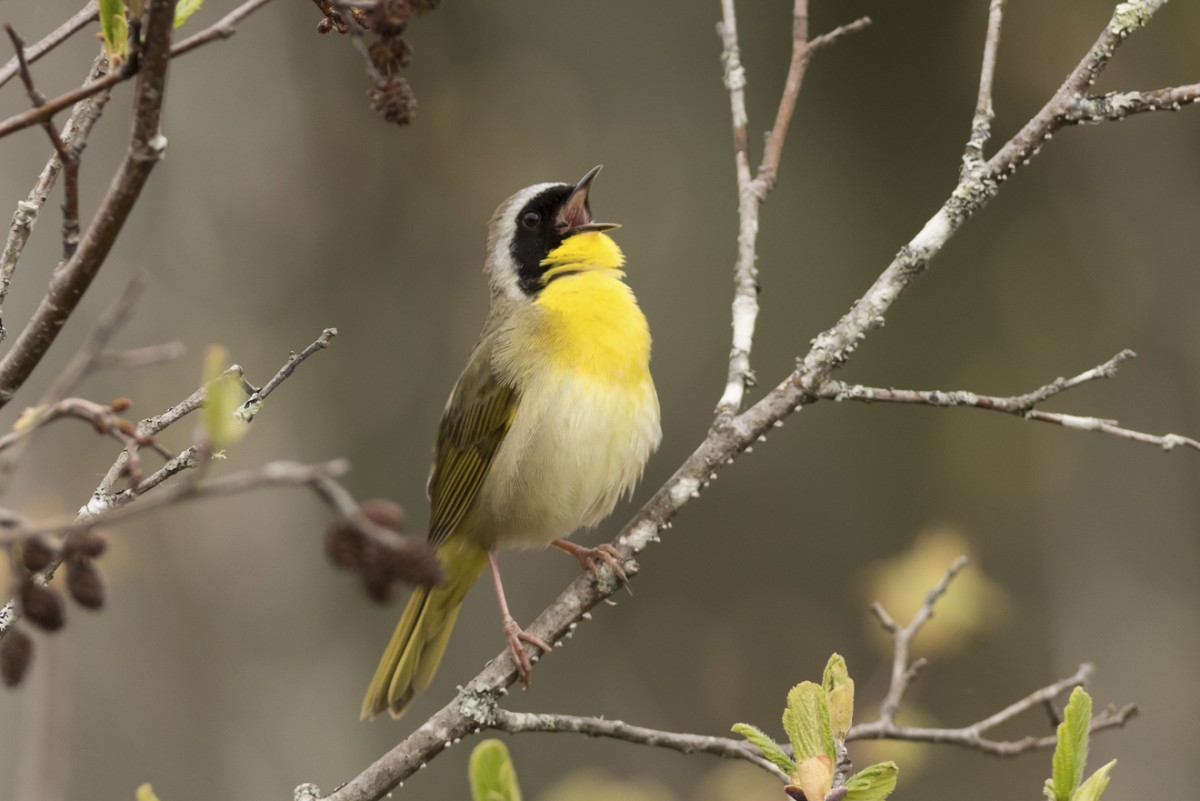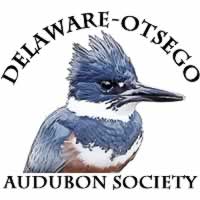November 2005
Follow up on Endangered Species Act threats— Last month we reported on efforts to drastically weaken the Endangered Species Act in Congress. Rep. Richard Pombo had pushed legislation that would cut the heart out of this critical wildlife protection measure. Unfortunately, Pombo’s “Extinction Bill” cleared the House Natural Resources Committee, which he chairs, and quickly went to the House floor, where it was approved on Sept. 29.
Among the 34 Republicans voting against this dangerous bill was local representative Sherwood Boehlert, who consistently stands up to protect the environment, despite strong pressures from his party and the Bush administration. Also voting against the bill was Maurice Hinchey, who represents lower Delaware County, and Michael McNulty representing Schoharie County. On the wrong side of the legislation was John Sweeney who represents upper Delaware and eastern Otsego Counties.
The action on revising the ESA now moves to the US Senate. To save the protections that have brought back the Bald Eagle, Peregrine Falcon, American Alligator and others, it is necessary that the Senate reject the House legislation.
What you can do— Write your representative to let them know you are aware of their vote on the Extinction Bill. In particular, Rep. Boehlert deserves praise for his recognition of the importance of the ESA, and his courageous stance against those who would make it meaningless. Also contact US Senators Hillary Clinton and Charles Schumer and urge them to stand strong against attempts to weaken the ESA.
NY Voters Guide released— Environmental Advocates, the leading group watchdogging conservation legislation in Albany, has released its 2005 Voters Guide, outlining how NY Senators and Assemblymembers have acted toward environmental issues in the state legislature over the past year.
This year EA focused on five environmental “Super Bills”:
· The Community Preservation Act to empower local communities to establish a small real estate transfer fee with revenues earmarked for the protection of natural areas, farmland and historic landmarks.
· Wetland protection legislation to fill a gaping hole in New York’s wetlands laws that allows developers to destroy wetlands under 12.4 acres in size.
· A carbon cap for NY’s power plants that would cut emissions of carbon dioxide–the primary cause of global warming–from the state’s fossil fuel power plants.
· The Bigger Better Bottle Bill to expand the state’s existing bottle deposit law to apply to the vast number of bottled waters, juices and other non-carbonated beverages that are not currently redeemable.
· A burn barrel ban to stop the backyard burning of garbage, the largest source of dioxin and other toxic and cancer-causing chemicals in rural parts of the state.
Unfortunately, area state legislators rated fair at best in the EA ratings. Assemblymember William Magee voted for 3 of the Super Bills, but voted against the carbon cap and ban on burn barrels. Assemblymember Clifford Crouch supported the burn barrel ban and Community Preservation Act, but against the other three.
In the State Senate, the picture was even bleaker. All the Super Bills were blocked by Republican leadership in the Senate, but Senators were asked to co-sponsor the bills to improve their chances of passage. Senator John Bonacic did co-sponsor the Bigger Better Bottle Bill, but did not support the others. At the bottom of the barrel was Sen. James Seward, who did not cosponsor any of the Super Bills, and as part of the leadership, helped keep them from even being voted on. In addition, Seward’s overall environmental voting rating of 56 was near the bottom for the entire Senate.
What you can do— Contact these legislators and impress upon them that this common sense legislation is good for NY, its citizens and its environment. It is particularly important that Senators know that their deceptive practice of avoiding a vote on these well-supported bills is recognized by their constituents.
Eco-horrors in Louisiana— As has been reported in news accounts, the environmental devastation in southern Louisiana from Hurricane Katrina is overwhelming. The area had numerous oil and gas production facilities, chemical plants and hazardous waste sites which were battered by high winds and the storm surge or inundated by flood waters.
Over 6 million gallons of oil has spread from 5 major spills, which does not include what has escaped from hundreds of thousands of smaller tanks and vehicles. There are 31 Superfund sites in the hurricane zone, along with many temporary storage sites for industrial toxic wastes. 5000 “orphaned containers” holding substances ranging from gasoline to chloroacetic acid to medical wastes have been found to date.
The Louisiana coast is home to 16 National Wildlife Refuges— all damaged and now closed. Endangered and threatened birds, turtles and other wildlife are exposed to the toxins left behind by receding floodwaters.
It has long been known to scientists and environmentalists that Louisiana’s wetlands have been severely degraded by channelization of the Mississippi River, dredging, and chemical contamination. The buffer that these extensive marshes at one time provided would have significantly reduced the hurricane’s surge into New Orleans and vicinity, saved lives and property, and minimized environmental damage.
One would think that the lessons of Hurricane Katrina were clear, particularly regarding the environment. However, there are calls from within the Bush administration and from Congress to weaken or eliminate environmental safeguards during the rebuilding of New Orleans, despite the hazards and threats to people and wildlife. Also, little has been heard about restoring and protecting the Mississippi delta’s wetlands to avoid a similar catastrophe.
What you can do— Let your federal representatives and President Bush know that the environmental disaster that exists in Louisiana should not be made worse by exemptions from laws and standards for cleanup and rebuilding. Ask that the critical protective marshes be given increased protections and attention. In addition, redevelopment of the most threatened and sensitive low-lying areas should be prohibited as a matter of common sense.
Endangered Species Act attackers push ahead in Congress— Rep. Richard Pombo (R-CA), Chair of the House Natural Resources Committee and long-time foe of the Endangered Species Act, has brought legislation to that committee that would gut the long-standing and successful ESA and replace it with a measure favored by developers, timber and mining companies, and extreme property rights groups.
Dubbed the Extinction Bill by environmental groups, Pombo’s legislation would:
- Eliminate critical habitat designations— Species with designated critical habitat recover twice as fast as those without. This legislation completely eliminates critical habitat—one of the most important and successful conservation tools.
- Politicize scientific decisions— The ESA currently requires all decisions be made on basis of the best available scientific information. Pombo’s bill allows the politically-appointed Secretary of Interior to define the best science and unilaterally make decisions.
- Eliminates independent oversight— The EAS requires that wildlife agencies independently review federal actions which may harm endangered species. Pombo’s bill allows the Secretary of Interior to exempt individual projects or entire classes of projects from independent oversight.
- Allows projects that harm species— The current ESA requires that all actions which may push species toward extinction be reviewed before they are implemented. Pombo’s bill reverses the order. It requires that destructive projects go forward with no review unless federal agencies object within 90 days.
What you can do— Contact your US Representative and urge them to oppose Pombo’s Extinction Bill should it reach the House floor, and ask US Senators Hillary Clinton and Charles Schumer to stand strong against similar attempts to weaken the Endangered Species Act in the Senate.
BIG vote on Alaska drilling— As most conservationists are aware, one of the main energy policy goals of the Bush administration is to open the Alaska National Wildlife Refuge to oil and gas development. To date they have been stymied by a bipartisan coalition of legislators who recognize the irreplaceable values of this wilderness and the minor impact drilling would have even if significant reserves are found.
With the elections of 2004, the administration’s hand was strengthened, and they are now near having the votes to prevail. A critical decision will be made in Congress this fall as to whether to include drilling in the overall budget bill. One of our local representatives, Sherwood Boehlert, will likely play an influential role in this debate and vote. Although opposed to opening ANWR to oil and gas exploration, he can also push other Republicans to withhold their support in the face of White House pressure.
Likewise, we can participate in saving the Alaska Refuge by encouraging Boehlert to stand strong on this issue and to use his reputation among his colleagues to vote the right way.
What you can do— Contact Sherwood Boehlert as soon as possible and let him know that his stance to protect ANWR is appreciated and ask him to continue his efforts to influence other members of Congress.
For more information on how to help save ANWR, visit www.ArcticRefugeAction.org.
NY legislative wrapup— The NY State Legislature adjourned in a timely fashion this year after passing a technically on-time budget. However, it was another lackluster session for environmental initiatives, with the State Senate again blocking a number of common sense and necessary measures.
The Community Preservation Act which would have given municipalities in NY the authority to establish a small tax on real property transfers for land protection passed the Assembly and had strong support in the Senate. However, it was kept from a vote by the Senate leadership due to pressure from developers. Hopefully this worthy legislation can be pushed ahead next year.
An effort to expand the returnable container deposit law to include juice and water containers likewise passed the Assembly but was stopped by Senate Majority Leader Joseph Bruno who consistently does the bidding of the bottling industry.
Also well-supported but kept from a floor vote in the Senate was legislation to close the loophole created when federal wetland protections were lost. As it now stands, NY’s smaller wetlands are open to filling or draining without permit. These areas provide valuable wildlife habitat and mitigate floods and droughts as well as help purify water.
What you can do— Let local State Senators James Seward and John Bonacic know that you are disappointed in the continuing practice of the Senate in keeping environmental legislation from even being voted on. Each of these measures had broad public support, but was stopped by the efforts of special interests.
Look for Environmental Advocates Voting Guide this fall which will rate legislators on their actions and votes on these and other bills. Voting Guide information is available at www.eany.org.
Important opportunity for ATV use in State Forests— Your help is needed to protect New York State’s Adirondack and Catskill Forest Preserve, and other state lands from the damage and disturbance of motorized vehicles.
All Terrain Vehicle (ATV) use—legal and illegal—on these public lands is a serious problem. ATVs cause soil erosion, damage vegetation and streams, disturb wildlife, and conflict with low-impact uses of state lands. With increasing development and urbanization, the relatively undisturbed State Forests are more important than ever as the only remaining large wooded tracts providing crucial habitat for birds and wildlife. They also serve as a refuge for hikers, skiers, birders, or those seeking a quiet place away from a hectic world.
In the past, the NY State Department of Environmental Conservation has considered ATV riding an appropriate use on state lands. Dedicated ATV trails were proposed and established in a number of locations, and off-road vehicle organizations pushed for more and more access into the State Forests. The conservation community has repeatedly spoken out against ATVs on state lands. In 2000, DOAS and other groups came together to halt a planned 80-100 mile ATV trail in the Treaty Line State Forests near Masonville.
In response to calls from both sides, DEC has now proposed a draft policy on ATV access to State Forests and other lands under their jurisdiction. This policy is a significant step forward in recognizing the threats of ATVs to these irreplaceable natural resources, and limiting their use on public land. The new plan clearly states that ATV riding is not a program offered on lands owned by the state and that ATV use is not encouraged in these areas. It will drastically limit ATV use in Forest Preserve lands in the Catskills and Adirondacks, and ban it outright on Wildlife Management Units and Environmental Education Areas.
On State Forests outside the Catskills and Adirondacks, ATV use may be permitted only to access recognized recreational programs, such as hunting, fishing, trapping, camping or wildlife observation, in compliance with strict criteria regarding resource protection, illegal use, and conflicts with other users. In addition, ATV trails will be allowed on those lands where the state has acquired a recreational easement, rather than outright purchase. These areas are typically timber company lands where logging roads and vehicles are already present.
The net effect is that very little, if any, legal ATV use will be possible on lands owned by the state. (Exceptions are made for persons with disabilities under existing DEC policy.) The policy could be strengthened by placing limits on the distance ATVs can travel on public roads to reach areas that are open to them. Currently snowmobiles can travel a maximum of 500 yards on public roads for this purpose, which would be a reasonable limit for ATVs also. Also, placing equipment requirements on ATVs on state lands, such as turf tires rather than mud tires, four-stroke engines, spark arrestors, and a ban on winches, would help improve public safety and reduce environmental damage.
What you can do— These changes are far from certain! A series of public hearings and a public comment period are being held on the draft ATV policy. Off-road vehicle riders, dealers and lobbyists have organized to stop these protections from being enacted. It is essential that those who want to safeguard the forests and wildlife speak out! Let DEC know that you support our wild public lands and that motorized recreational vehicles are an inappropriate use for these special areas. Urge that the draft policy be strengthened, enacted and enforced to protect the forests for this and future generations.
The draft policy is available at http://www.dec.state.ny.us/website/dlf/publands/atv.html. Comments can be submitted until May 27 to: Robert Davies, Director, Division of Lands and Forests, NYS DEC, 625 Broadway, Albany, NY 12233; or by email to: lflands@gw.dec.state.ny.us (put “ATV policy comments” in subject line).
A schedule of public hearings is available at the web site above, or by calling (518) 402-9405.
Move to restore wetlands protections in NY State— The Freshwater Wetlands Act that protects these critical areas in NY State has generally worked well for those areas that fall under its jurisdiction. However, there has been one glaring flaw— that smaller wetlands, those under 12.4 acres, are not included in these protections. These smaller swamps, bogs and marshes make up much of the wetland area in the state and provide many benefits such as water purification, flood control, drought mitigation and wildlife habitat. Although they fell beneath NY’s threshold, they did receive some protection under the federal Clean Water Act. Now, interpretation of a 2002 court decision by the Bush administration has dramatically curtailed federal oversight of all wetlands, leaving the smaller pieces vulnerable to filling, draining or development. According to NY State Dept. of Environmental Conservation estimates, approximately 20 percent of New York’s wetlands could be left unprotected by this change.
To close this gap, legislation has been introduced in Albany to lower the threshold for state authority to protect wetlands from 12.4 acres to 1 acre. Entitled the Clean Water Protection & Flood Prevention Act, the bill would restore necessary protections for these fragile areas. The legislation received strong support in the legislature last session, but was kept from a vote in the State Senate. This year it needs to pass to keep developers who would take advantage of this loophole at bay.
What you can do—Write your state representatives and ask them to support the Clean Water Protection & Flood Prevention Act, A.2048/S.2081, introduced by the chairs of the Assembly and Senate Environmental Conservation Committees, respectively. Also, this bill is one of 5 priority issues for this year’s Earth Day Lobby Day in Albany on Tues., April 19. Participants will be able to take the message directly to their legislators. See elsewhere in this issue for more information on Earth Day Lobby Day.
Endangered Species Act needs funding—Our nation’s most important safety net for wildlife, plants, fish and insects that are on the brink of extinction is facing cuts in funds to carry out it’s critical mission.
The Endangered Species Act has been chronically underfunded for years, but President Bush is making things even worse. His proposed budget for Fiscal Year 2006 cuts ESA funds to only $140.1 while estimates of needs for species listing and recovery programs are no less than $212 million.
Due to the lack of resources, a backlog of listing decisions and critical habitat designations has built up over the years. There are a total of 286 species currently awaiting protection on the Candidate Species List. An astounding 65 species have been languishing without protection since 1975. There have been instances of species becoming extinct while awaiting action on listing under the law. $212 million for FY 2006.
Similarly, recovery programs for those species that are listed as threatened or endangered are also falling short due to a lack of dollars. Essentially the Bush administration is setting the ESA up for failure by allowing these species to disappear. The US Fish & Wildlife Service has indicated that more than 200 currently listed species may be extremely close to extinction because of the lack of resources dedicated to recovery.
What you can do—Ask US Senators Charles Schumer and Hillary Clinton and US Representatives Sherwood Boehlert, Maurice Hinchey, Michael McNulty and John Sweeney to push for adequate funding for the ESA. This law is well-supported by the American public and should not be allowed to wither on the vine.
***********************************************************************
Deer and birds— The New York State Department of Environmental Conservation is currently revising its deer hunting seasons for 2005, and is taking public comments on the proposed changes. Although it may not seem that deer and birds are particularly connected, in reality deer populations are affecting birds and forest ecosystems in general.
Without effective predators to keep it in check, this large ungulate is causing significant changes to natural vegetation, the composition of our forests, and the quality of wildlife habitat in the forest under-story. Native plants are being overbrowsed to the point where some may become endangered or extinct. A recent study indicated that browsing of ginseng by deer may eliminate this valuable plant from eastern forests. Other vegetation is under similar pressure from an overabundance of deer. In addition to direct impacts on plants, the dramatic changes in forest flora is affecting numerous other species, including nesting birds, such as Wood Thrushes and Black-throated Blue Warblers that lack the understory vegetation they require for successful nesting in growing areas of the state’s forests. These landscape-scale impacts will affect our environment for generations.
Much of deer management is driven by economic factors, positive and negative. The current deer population is not low enough to alleviate the negative impacts. Automobile accidents, the consumption of agricultural products and landscaping, and the suppression of valuable timber species and wildlife food sources remain serious problems. While agricultural and timber damage is addressed on a case-by-case basis, ecological impacts are not given the same consideration.
The situation is likely to worsen. Deer hunting is losing popularity. Hunters grow older and fewer every year. The winters of 2002-2003 and 2003-2004 were helpful in reducing the deer population but not enough. Some spots may have a low number of deer, but numbers are still too high in many parts of the region. A couple of easy winters and the population will quickly return to previous levels.
There are natural means of reducing deer populations. Although coyotes are a less than ideal predator, they can impact deer numbers under certain conditions. Calls for the persecution of coyotes are an atavistic, emotional reaction that should be dismissed by DEC. It may make some people feel better but there is no ecological or management rationale for killing coyotes. Decades of coyote suppression using all types of methods have failed elsewhere. In addition, two large and effective predators of deer were extirpated from the state during a period of less enlightened understanding of wildlife. Wolves and mountain lions can again play a major role in controlling deer populations. DEC should begin a scoping process to consider reintroducing these native animals to the wilder areas of New York State.
There is also increasing concern over the effects of lead ammunition on scavenging wildlife. Many deer carcasses containing lead slugs or bullet fragments remain on the state’s landscape after hunting season. This toxic material threatens vultures, crows, ravens, eagles and other species. The primary cause of mortality among the endangered California Condor has been identified as lead from hunted carcasses. In this state, the leading cause of poisoning in Bald Eagles is lead, and the likely source is deer carcasses, a prime food source for these birds. Although lead shot has been banned for waterfowl hunting, it remains a danger to humans and wildlife alike. Alternatives do exist, and DEC should give consideration to expanding limits on lead ammunition.
Without a long-term solution to the deer problem, New York’s forests will continue to degrade. DEC is charged with conserving, improving, and protecting the state’s natural resources. With regard to white-tailed deer and their impact on the habitats of other, at risk, wildlife, they are not currently fulfilling that mission. The agency needs to change the basis of its deer management programs to science and healthy ecosystems, and to give greater consideration to the impacts of deer on the state’s other wildlife.
What you can do— The deer season restructuring process provides an opportunity for input to DEC on deer management. Let them know that they need to take a wider view of the impacts of deer and not just consider hunters’ desires for more deer. Also ask them to consider reintroduction of large predators to naturally control deer populations and to address the issue of lead poisoning from deer carcasses.








